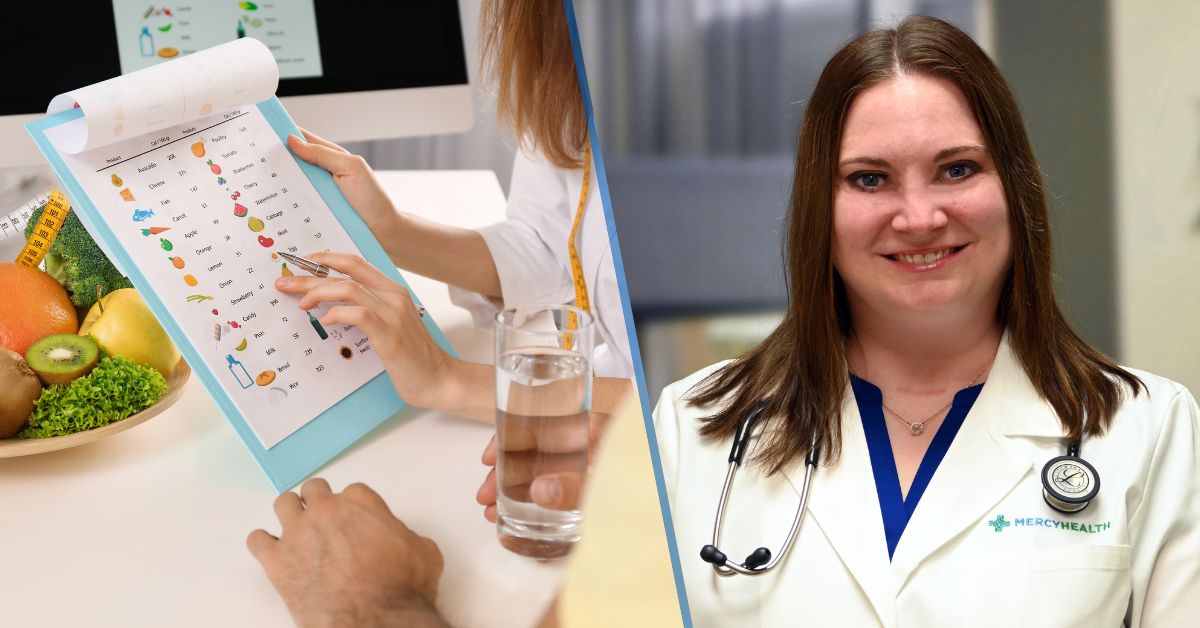Although close to 10 percent of Americans have diabetes, there are a lot of diabetes myths out there. This false information may lead you to believe that diabetic complications are an inevitable part of living with the condition — which isn’t true at all.
So, what is the most common misinformation about diabetes? These eight myths, paired with what the research actually says, will help you separate fact from fiction.
First off, do you need some help defining type 1 diabetes and type 2 diabetes?
If so, check out our blog post that helps explain the difference between the two. After you are caught up with that information, let’s start off with myths specifically about type 1 diabetes.
Myth 1: Type 1 diabetes is only diagnosed in children.
Fact: It’s true that most people diagnosed with type 1 diabetes are children or young adults, but it can develop at any age. While it’s rare to develop it after age 40, there is no upper age limit to be diagnosed.
Myth 2: Type 1 diabetes is caused by eating too much sugar.
Fact: Wrong! Diabetes is not caused by eating too much sugar. While it’s true that eating too much sugar may be a contributing factor to developing diabetes, it’s not the “cause.”
Type 1 diabetes is an autoimmune disease and while we don’t know exactly what causes it, there is also no evidence that it can be caused by eating too much sugar.
Type 1 used to be called “juvenile diabetes” because it usually develops in children and teens. But as the name implies, it’s not caused by anything that children did or didn’t do, including eating sugar.
Myth 3: If you have type 1 diabetes, you were born with it.
Fact: No, type 1 diabetes is not simply inherited. It is an autoimmune disease often triggered by a viral infection or another environmental factor that causes your immune system to turn on your body and attack the cells in the pancreas that make insulin.
In type 1 diabetes, the immune system attacks the insulin-producing beta cells of the pancreas. The result is that no insulin is produced, causing blood glucose levels to rise to dangerous levels. When our blood glucose stays too high for too long, serious complications can occur, like heart disease, stroke, kidney failure, blindness and the need for amputations.
We don’t fully understand why some people get type 1 diabetes and others don’t. However, it’s likely that both genetic and environmental factors play a role.
The most important thing we can do is identify risk factors early so we can find children at risk of developing this disease before they develop symptoms. We may be able to prevent or delay its onset by changing certain environmental factors that trigger its development in susceptible individuals.
Myth 4: Type 1 diabetes can be cured.
Fact: There is no cure for diabetes. Diabetes is a complex disease, and scientists are still researching how it develops and what causes it. So far, they haven’t found a cure. Because there is not yet a cure, people with type 1 diabetes must manage their blood glucose levels every day of their life. They do this through insulin therapy, healthy eating and physical activity.
Diabetes is not curable — at least not yet. But the good news is that diabetes can be managed.
And now on to common type 2 diabetes myths, the more common form of diabetes affecting 90 to 95 percent of people living with diabetes in the United States.
Myth 1: Only obese people suffer from type 2 diabetes.
Fact: While obesity is a major risk factor for developing type 2 diabetes, it’s not the only one. In fact, there are people with diabetes who are of normal weight or are even underweight. Other major risk factors include age and genetics. While you always have some control over your weight, you can’t control how old you get or what your genes say.
Myth 2: Type 2 diabetes is not a serious condition.
Fact: Diabetes is a serious medical condition that can cause complications, such as heart disease, kidney disease, stroke, blindness and loss of toes, feet or legs. Additionally, people with diabetes are also more likely to die from flu or pneumonia.
You can manage your diabetes and reduce your risk of these complications by controlling your blood sugar and keeping it within recommended targets.
Myth 3: Type 2 diabetes is contagious.
Fact: No, you cannot “catch” type 2 diabetes from someone else. However, a family history of diabetes does put you at a higher risk of developing the disease down the road. If one or more of your parents has type 2 diabetes, you have a greater chance of developing it, too. Your chances are even higher if a parent was diagnosed with the disease before the age of 50.
Myth 4: I have diabetes, but I never need to test my blood sugar because I know when it’s high or low.
Fact: You may think you can tell when your blood sugar is high or low by how you feel. But, often, there are no early warning signs of high (hyperglycemia) or low (hypoglycemia) blood sugar levels. You may feel fine and not know your blood sugar is too high or too low until you have symptoms.
To manage your diabetes better, you need to test your blood sugar at different times throughout the day. Your health care provider will help you set up a plan that’s designed for you. This plan may include testing before breakfast, lunch, dinner and bedtime, as well as after snacks and physical activity.
If you don’t check your blood sugar often enough, you increase your risk of complications.
Do you need a health care professional to help you manage diabetes or answer your diabetes myth questions? Learn about the endocrinology services and primary care services we provide at Mercy Health.






